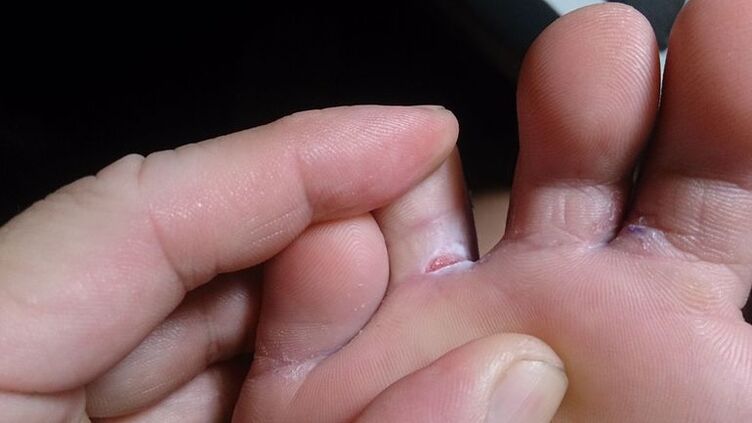
Mycosis is a group of diseases caused by pathogenic fungi.Such areas of the skin affected on these microorganisms are called dermatomycosis.Sometimes they are combined with onychomycosis, nail disease.Knowing the fungi of the foot, you can treat the disease in a timely manner and avoid complications.There are several options for this pathology course.
The mechanism of foot infection
There are factors that directly influence the possibilities of infection with fungi.Also, in this sense it depends much on the state of the immune system.When the body's defenses decrease, the likelihood of developing mycosis increases significantly.Immunity can be weakened by chronic infectious diseases and pathologies of the endocrine system.You can infect the fungi directly or indirectly.In the first case, this happens:
- Soil layers;
- Different plants;
- Contact with an infected person or animal.
The indirect route includes the use of hygiene items and other items that the patient is actively using.
The genus fungi Candida live on the surface of the epidermis.When the composition of sweat gland secretion changes, nutrients are created for the development of microorganisms.Representatives of the Candida group acquire pathogenic properties.This means that they can easily cause the disease.
Classification of mycosis
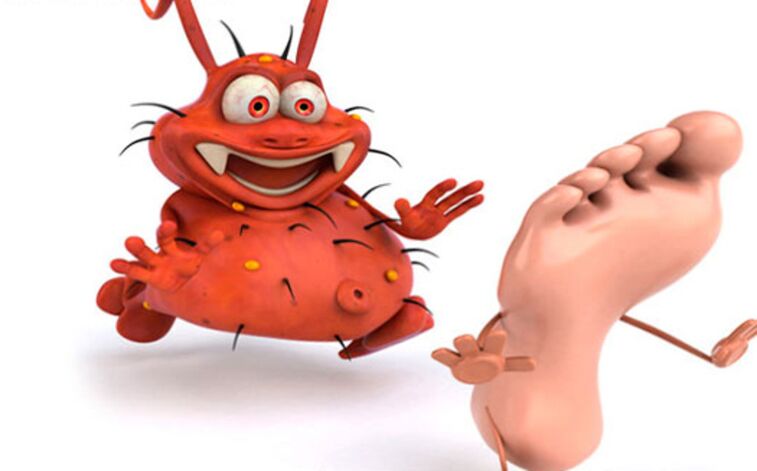
With epidermophytosis, the skin and nails are affected.You can become infected with this disease in public places: gym, saunas.Through which objects are the pathogen most often moved:
- Towels;
- Washing clothing;
- Oil clothes;
- Subjects.
In adulthood, men are more likely to experience epidermophytes.A favorable factor in the development of the disease is an increase in sweating.
Trichophytosis can be caused by different types of fungi from the group of trichophytons.The disease is considered very contagious.This is transmitted through the shoes that carries the infected subject, washing clothes, towels and other bathroom accessories.Pathology is more common in children.About 17% is the prevalence in adolescents.Usually, young people suffer.Among adult men, the incident is even greater.Employees of seminars, baths, showers, athletes, miners are at risk.
Stop candidiasis is less common than epidermophophy.Most of the genus fungi Candida belongs to the conditionally pathogenic group.This means that these microorganisms are normally represented by the human epidermis.They acquire pathogenic properties after impaired immunity.
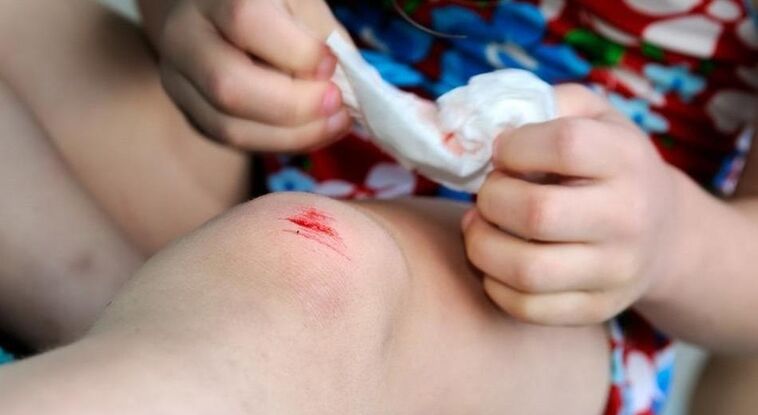
In order for Candida fungi to enter the body, it is sufficient to use the patient's objects.These microorganisms are often found in food products such as meat, milk and milk.The risk of infection increases in the presence of such factors:
- Skin injuries due to exposure to chemical components, alkali and acids;
- Maceration, skin sweating;
- The presence of fungi in the air in large quantities.
Symptoms of the disease
By the nature of the course, rubric and epidermophytosis are similar.For this reason, experts combine them in one category - Mikoza Stop.It is distinguished by its forms of large -scale, dyshydrate and intertriginosis.A separate group is onychomycosis that can be:
- Atrophic;
- Normomrophic;
- Hypertrophic.
With dyshydrotic mycosis, the work of the sweat glands is delayed.The fungi with an intertrigonic shape on the fingers look like a diaper rash.Despite such divisions, it must often be considered conditional, as different variability of the disease is united.
Squamous and dyshidrotic
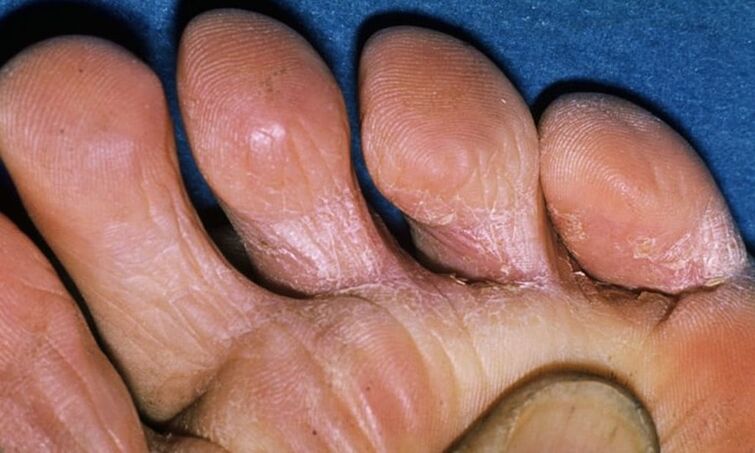
Initially, the squamous form of fungi affects one side.Then he goes the opposite.Redness areas are formed on the skin, which gradually begins to skin.Some patients complain of itching.The area of injury can be large and small, depending on the patient's body.There are people who experience this form of mycosis of the legs, but nothing bothered them.
Feet skin fungus, which has a dyshydrotic shape, looks peculiar: bubbles are produced in diameter from 2 to 8 mm in large quantities, on the shape of the arch.A little bit, they begin to merge into larger formations and then glorify.They are caused by ulcerative skin damage.Sometimes the process moves to the inner and outer lateral surface.The bubbles are opened and you can see diapers rash areas with erosion.
Fungi on the legs also show itching and pains.The erosion is dry and healing in the future, and the skin is created on the ground.Fungal infection can be complicated by bacteria.In this case, the fluid inside the bubbles becomes a cloud.The skin on the feet is swollen, blowing.The dyshydrotic form is characterized by a long stream.Remission periods are alternative to exacerbations.Usually, the fungus in this form affects only one feet.
An intriguing form
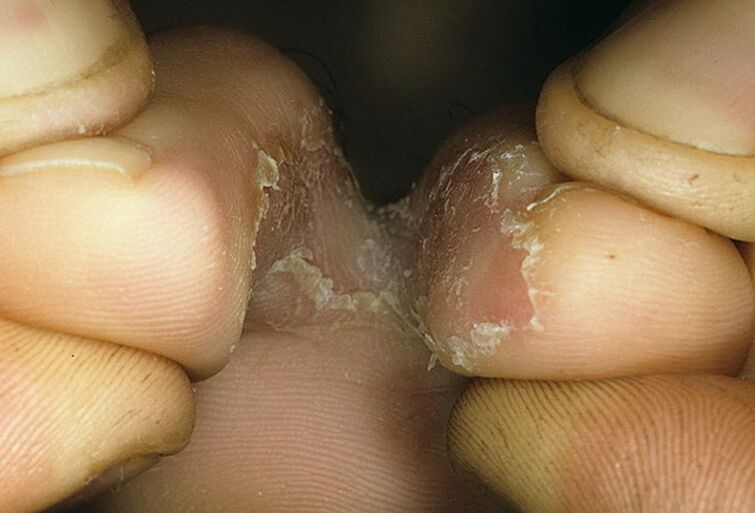
It has become the most common and produced independently.Less often, this form develops against the background of scams.The process affects between the 4th and 5th fingers of the foot.The main symptom is the appearance of cracks on the epidermis with a whitish ring.Surface layers of the skin are exfoliated.There is a weakening between the fingers.The patient complains of burning and itching.In areas of injury, it is quite painful to touch the form of erosion.
The integral form in most cases is chronic, has a long stream.The situation improves in the cold season and exacerbates the summer.In patients with this form, the skin opens over time.Its protective functions are reduced.This creates a favorable basis for streptococcal infection.On the epidermis, abscesses are surrounded by sections of swelling and redness.
Types of onychomycosis
This disease causes damage to the nails on the fingers.At first the pathogen attacks the free edges of the plate.Here are the yellow shade strips and spots.Several forms of onychomycosis are distinguished:
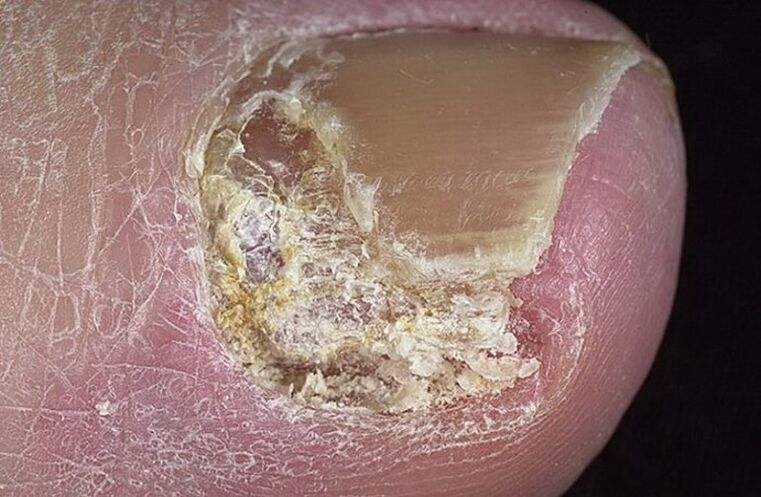
- Hypertrophic.The nail becomes yellow, its thickness increases.It collapses, and under it the skin is pierced and thickened.
- Atrophic.Here the opposite situation is observed when the nail becomes thinner and falls.Under the skin is covered with a keratinated layer.
- Caused by molding fungi.It creates other types of nail diseases.The plate can be green, yellow, brown and sometimes completely black.Paronychia, purulent inflammation, creates a periodic space.
In 70% of cases, onychomycosis affects the 3rd, 4th and 5th branches.In 30% of cases, fingers 1 and 4 are affected.
Treatment of fungi
There are various healing regimens for the disease that the doctor chooses individually.
Additional treatment methods include the intake of immunostimulants and vitamins.They help strengthen the immune system.If bacterial infection occurs, antibiotics are prescribed.Sometimes the origin of fungal infection supports the underlying disease.It still needs treatment.We are talking about dermatological pathologies and chronic infections.Antihistamines are recommended in the presence of an allergic component.
Traditional medicine
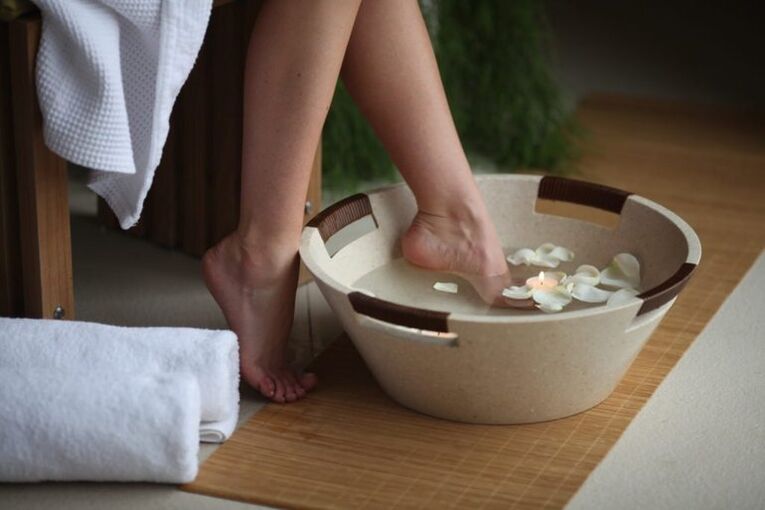
Mycoses do not pose a significant threat to health.But their presence helps to reduce immunity, acting as focusing on inflammation.Only antifungal therapy using specialized medicines helps prevent such a problem.Early stage is permitted to use folk recipes, which is complemented by basic therapy.What methods can be used:
- Taking baths;
- Processing of affected areas with medicinal herbs decorations;
- Ointment application.
For baths you can take wine vinegar because it has an antiseptic effect.You should first wash your feet with warm water and spread.Then, the wine vinegar is poured into the water from 1 to 2 in a ratio, and the legs are reduced.They take 5 minutes there, after which they put their socks at night and go to bed.
Another version of the bathroom involves the use of soda and salt.Take a tablespoon of both ingredients and dissolve in water.After that, lower your feet in the solution, let stand for no more than 15 minutes.At the end of the procedure, the legs are washed with warm water.
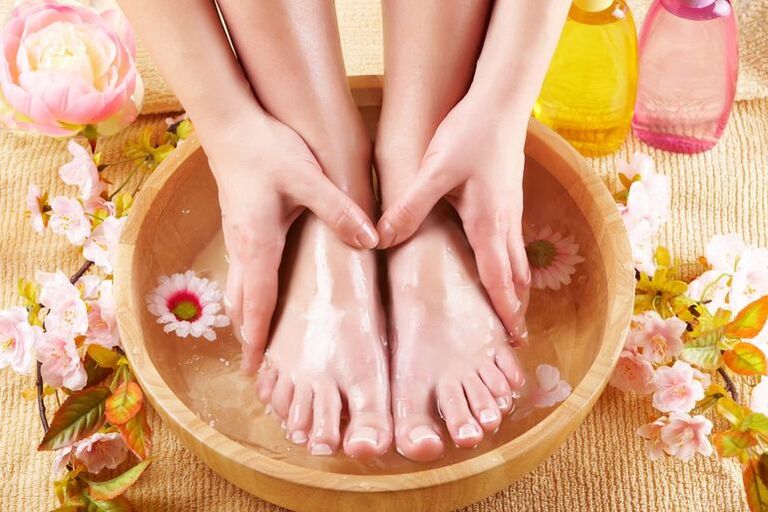
Drug verbena and calendula inflorescences can be used for treatment with therapeutic decorations of the legs.Also, oak bark, dried blackberry berries have a good antiseptic effect.The selected components are mixed in the same amount.3 tbsp.L.And pour a glass of water.Insert a small fire for 15 minutes.Filter and moisturize the decoration damage by the resulting decoction.Also, this tool can be used for lotions.
To prepare healing ointments, they combine the same amount of pig fat and wood ash.The resulting ointment should be thick and have a homogeneous consistency.It is used twice a day to cleanse and clean the dry legs: morning and evening.



























